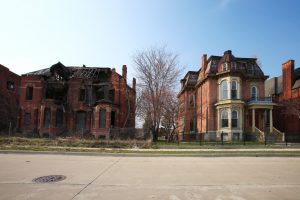
Older homes need special care not only physically, but in terms of insurance as well. If your house has a plaque or is over a century old, you may have a hard time finding insurance. The insurance industry doesn’t dislike older homes, but the municipalities will have special bylaw restrictions on repairing or rebuilding the home with a plaque that have higher costs associated with rebuilding the homes. The bylaws will slow down the repair or rebuild process as well as cause costly delays in any repair work being completed.
Another hurdle that insurance companies face is the building materials used in the construction of the house. The construction materials that make up a historical building with a plaque will most likely not be available today or have limited quantities. An example of this would be the height and materials used in baseboards prior to World War II. The older baseboard styles were often three pieces consisting of a flat plank, a decorative molding, and a rounded shoe molding to reach the floor. These types of baseboards are still sought after today for the character they bring to the
home, but are considerably more expensive than traditional baseboards used today. After World War II everyone got on the bandwagon for cheaper products that can be mass produced and building supplies were no different. Recreating these older baseboards have higher costs than using traditional trim used in new house builds today and the little details like these baseboards need to be factored into the cost of rebuilding your heritage home in the case of a loss.

The difference between new building materials and older building materials is apparent to everyone. The one thing people may not consider is partial losses to their homes. If you have a heritage building that has a single room or even half of the building damaged (fire, water, etc), the building crews will have a very difficult time matching the original design of the home with new building materials. For example, older buildings may have a double brick exterior where the new building standard is a wood framed home that has a single brick veneer exterior. If you try to match the two styles together, they simply won’t line up aesthetically. This causes issues for the building crew, but also causes those expensive delays in repairing the home. The longer it takes to repair the home, the more costly it is.
It may be difficult to find a broker or insurance company that is willing to insure a heritage home or insure the home correctly, but it can still be achieved. The key is to find a broker who has experience insuring these types of homes as they require a larger skill set than just insuring newer homes. The broker will have to know older building materials, electrical standards, plumbing standards, and be aware of local bylaws. The broker taking care of your historical home should be offering services such as:
- Detailed rebuild evaluations
- Home inspections prior to writing insurance to ensure proper coverages
- Quotes from multiple insurance companies
- Experienced brokers that can navigate the restrictions on heritage homes
If you need help insuring your heritage home, you can contact us to help you with your insurance needs. Our brokerage sits in a very historical town that has close to 300 heritage homes that currently have a historical plaque affixed and two heritage conservation districts. This gives Elliott Insurance Services the distinct experience advantage over other brokers when it comes to heritage homes.
